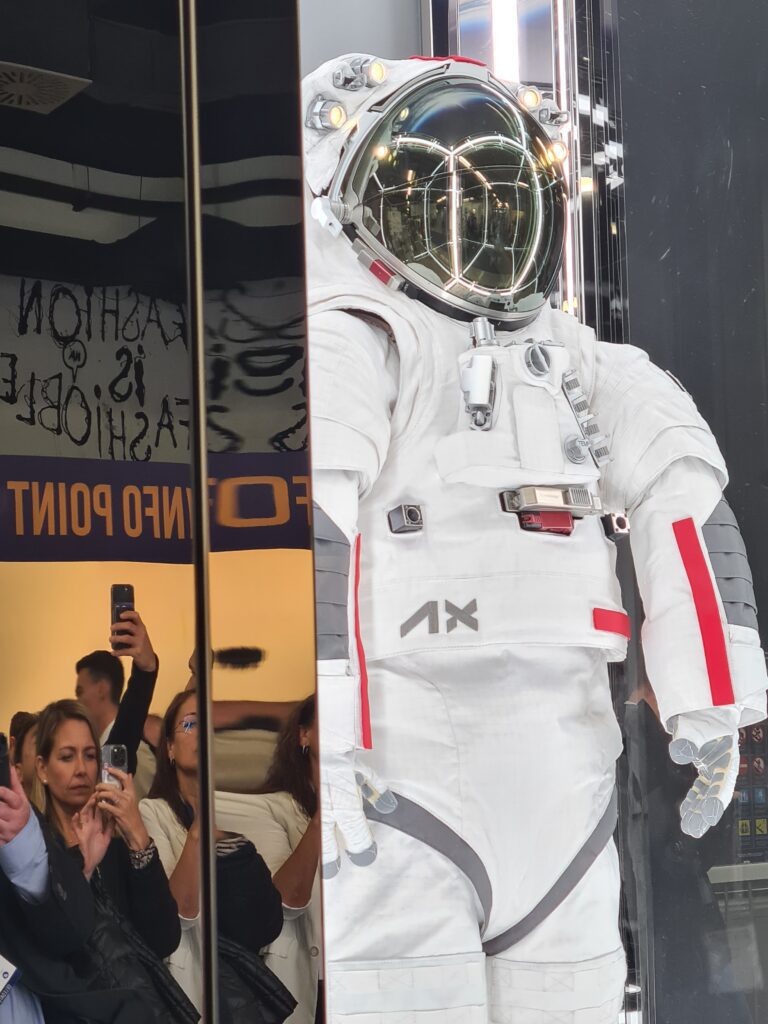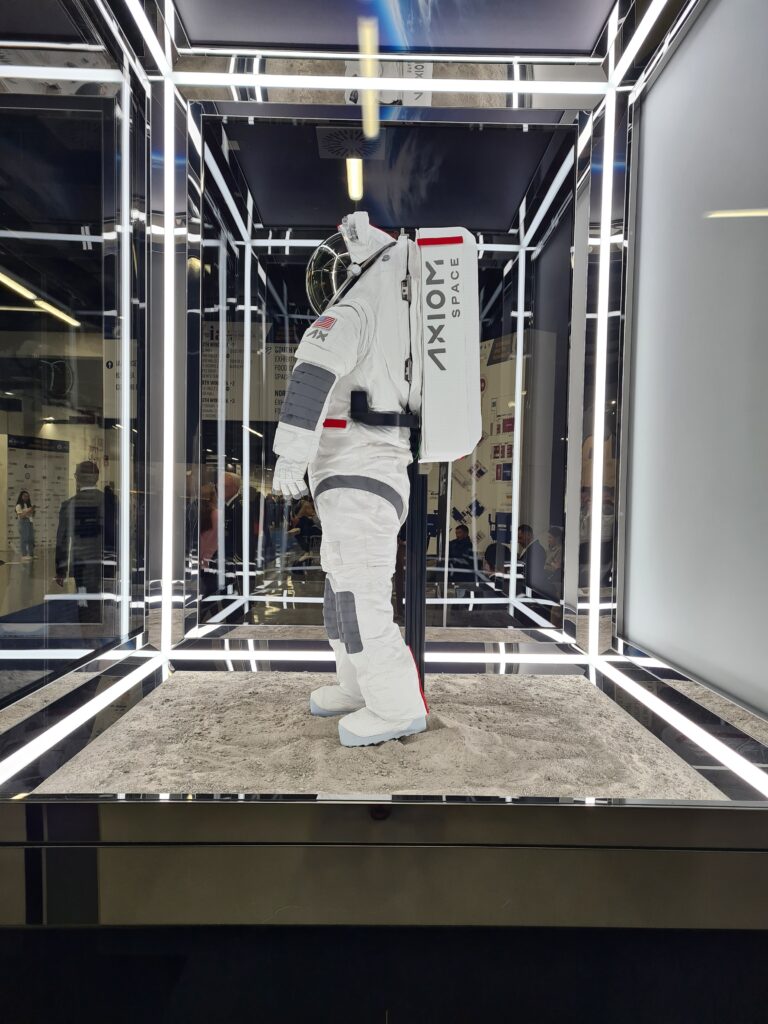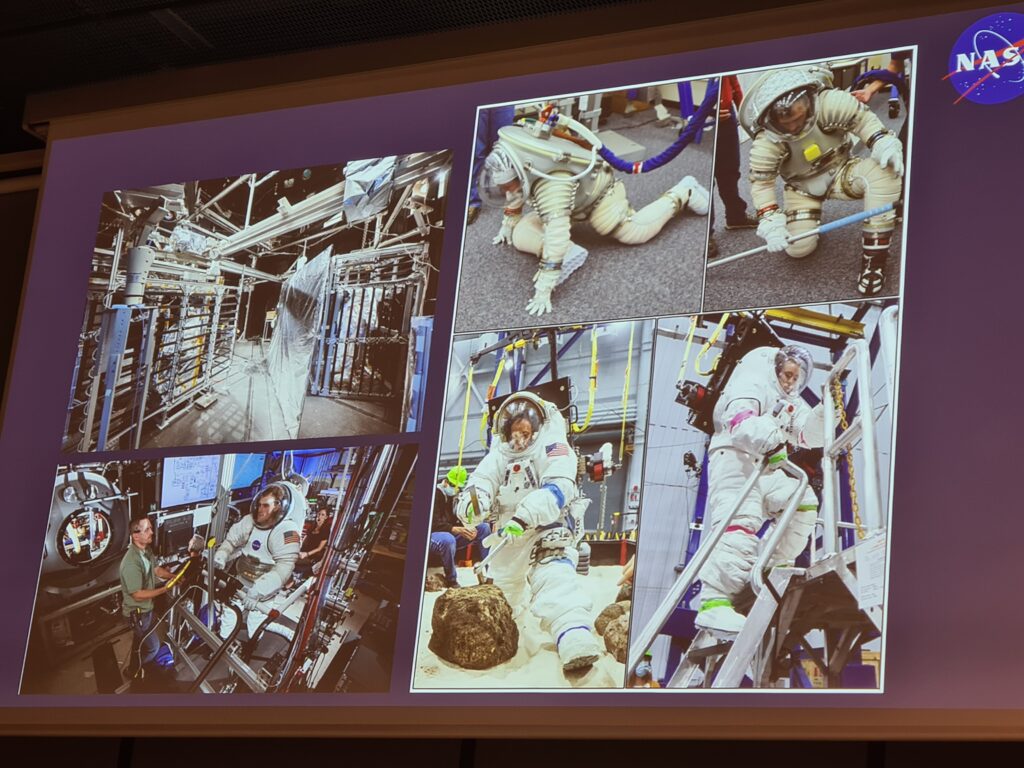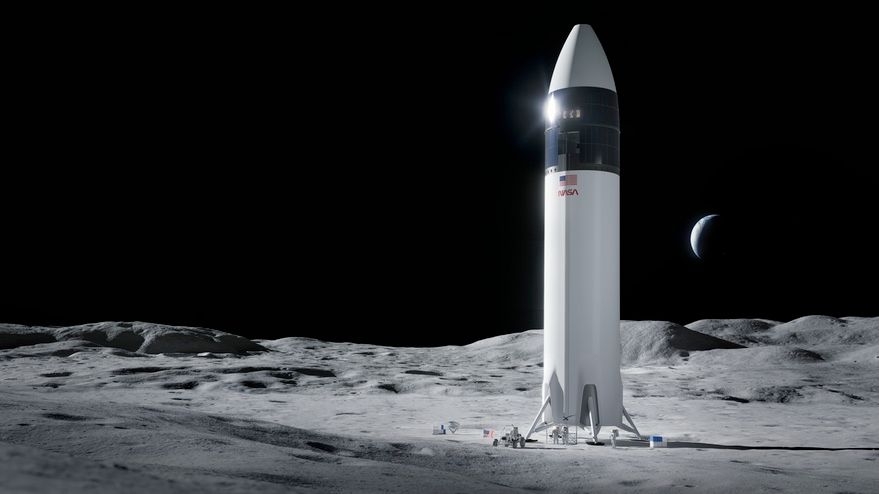Amid the plethora of people at the International Astronautical Congress (IAC) in Milan, one of the fashion capitals of the world, there was undoubtedly one outfit that turned the most heads: that of Axiom’s Artemis spacesuit.
The Axiom Extravehicular Mobility Unit (AxEMU) spacesuit is literally not designed for our planet; its destiny is much grander. It will be worn by astronauts when they land on the Moon as part of NASA’s Artemis 3 mission, scheduled for 2026.

Axiom’s newly unveiled spacesuit made many heads and cameras turn its way, at the IAC conference in Milan. Courtesy: Farah Ghouri
While earlier versions of the suit have been shown to the public, proprietary elements were obscured by a dark cover layer that would not be used in spaceflight. The latest version, unveiled at a briefing at the IAC, features a white outer layer that will be used in spaceflight. It was a deft PR move by the Texas based start-up given that its partner is none other than Prada, the renowned Italian fashion house.
A red stripe on the suit, which stands out against the otherwise minimalistic aesthetic, is a clever nod to both Prada and NASA. Traditionally NASA has applied a red stripe to a mission commander’s suit to help fellow astronauts more easily identify them. For the Italian designer, the red line translates to “Linea Rossa” – Prada’s sportswear brand.
As well as the luxury designer’s sartorial hand in the suit, its greater contribution to the AxEMU came through its expertise in stitching. Axiom credits the fashion house with helping to pattern the outer layer of the suit, which is designed to reflect sunlight and stop dust (from the Moon’s regolith) breaching inner layers, a major safety hazard. The new suits have been developed to allow greater flexibility for astronauts and to withstand the unforgiving conditions of the lunar south pole. It can cope in the permanently shaded regions of the Moon for at least two hours and be used for around eight hours of EVA. Built into the spacesuit is an onboard diagnostic system, a regenerable carbon dioxide scrubbing system and cooling technology to remove heat from the system.
Of course, the fitting is also key. The spacesuit has been developed to accommodate males and females from the first to 99th percentile (anthropomorphic sizing). Before it can be donned though, the AxEMU will undergo rigorous testing in 2025 when it will enter the critical design review phase.

“Make sure you capture my better side”. A side profile view of Axiom’s new spacesuit. Courtesy: Farah Ghouri
Comment by Farah Ghouri:
Axiom used NASA’s spacesuit prototype (xEMU) and the space agency’s defined requirements as the basis for the design and development of the AxEMU spacesuit. One of the key requirements was increased mobility for astronauts, especially as the world gears up for crewed lunar exploration and permanent lunar bases. At IAC Shane McFarland, who leads NASA’s Space Suit Technology Development Strategy, stressed that astronauts will be doing a lot of ‘walking’ on the Moon compared with previous missions. With the introduction of crewed rovers, he explained, an astronaut may need to walk safely back to a spacecraft in the case of their rover breaking down. The new spacesuits need to enable astronauts to bend and move their torsos because, with an increasing amount of infrastructure on the lunar surface, they are likely to engage in more repair work.

Courtesy: Farah Ghouri








